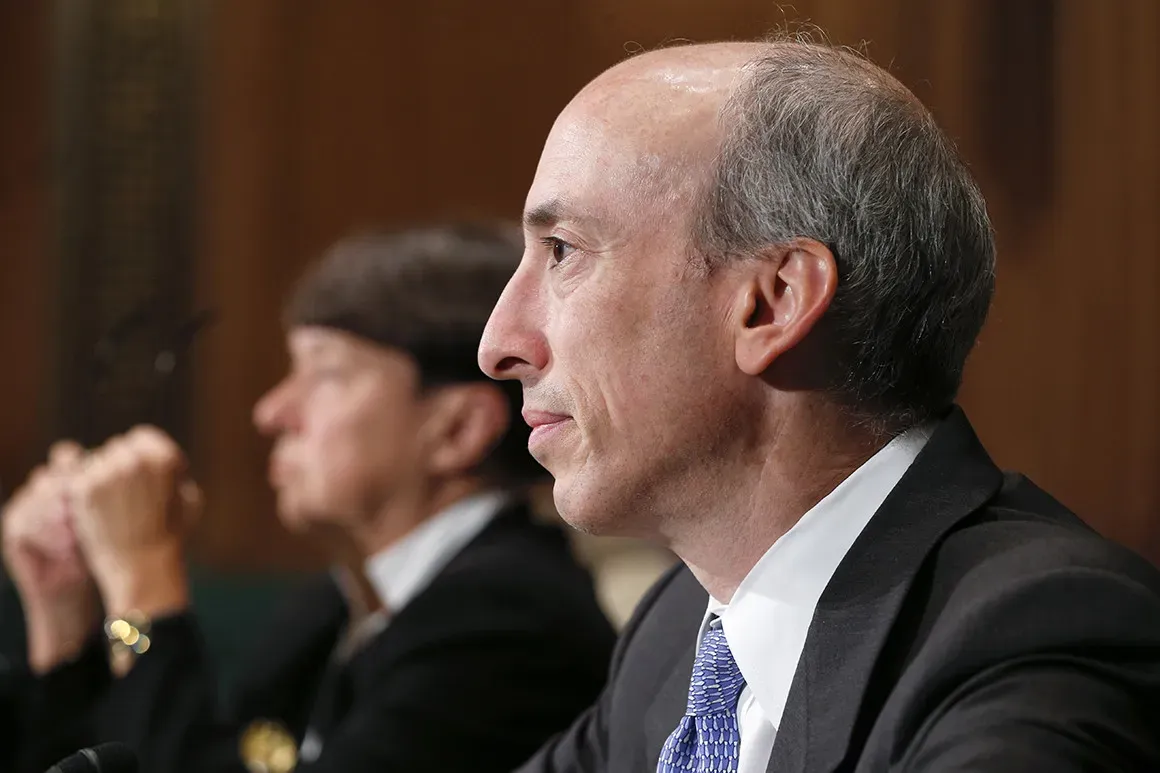The U.S. Passes Stablecoin Legislation! Why Did It Win Without Issuing a CBDC?

GM,
Last week, the U.S. Congress passed three major cryptocurrency bills:
- The GENIUS Act: Requires stablecoins to be backed by U.S. dollars or short-term Treasury bills.
- The CLARITY Act: Clarifies jurisdiction over cryptocurrencies between the SEC and CFTC.
- The Anti-CBDC Surveillance Act: Prohibits the Federal Reserve from issuing a Central Bank Digital Currency (CBDC).
This marks a historic moment. While most analyses have focused on how the U.S. aims to reinforce dollar hegemony, as a long-time observer of the crypto industry, this Blocktrend article will highlight the industry turning point behind these bills and their potential future impact.
The GENIUS Act: How Can We Prevent Stablecoin Depegging?
Last Friday, former President Donald Trump signed the GENIUS Act (Guiding and Establishing National Innovation for U.S. Stablecoins Act of 2025). Trump even joked that it was a “genius bill” named after himself. 😂
According to media reports:
The GENIUS Act primarily targets payment stablecoins pegged to the U.S. dollar. It mandates that issuers must obtain regulatory approval, maintain a 1:1 reserve using highly liquid assets such as U.S. dollars or short-term Treasury securities, regularly disclose reserve details and total issuance, and prohibits the issuance of algorithmic stablecoins.

When it comes to stablecoin depegging, the 2022 UST crash stands out as the most iconic case. At the time, UST—an algorithmic stablecoin issued by Terra/Luna—was not backed by U.S. dollar reserves but instead relied on the LUNA token and an arbitrage mechanism. When panic hit the market, both UST and LUNA spiraled into a death loop 1. Since then, algorithmic stablecoins have become a market taboo, and the GENIUS Act draws on this lesson by explicitly banning them.
The following year, a real-world asset (RWA) stablecoin called Real USD (USDR) emerged, backed by real estate 2. It promoted a yield-sharing model, allowing holders to earn a portion of rental income. It ended in failure as well. Real estate lacked liquidity, and when faced with a redemption run, assets couldn’t be liquidated in time—causing the stablecoin to depeg. From this, the GENIUS Act took away two more lessons: reserve assets must be highly liquid and immediately redeemable, and interest-sharing should be prohibited to avoid competing with banks.
And yet, even in the same year, USDC, a stablecoin with 100% U.S. dollar backing, briefly depegged 3. The cause? The collapse of Silicon Valley Bank froze $3.3 billion in deposits belonging to Circle, the issuer of USDC, making it unable to fulfill redemption requests. The GENIUS Act learned again: stablecoin reserves must be held in segregated accounts and not commingled with other deposits.
After these painful lessons, the GENIUS Act now mandates that stablecoins must:
- Be backed 100% by U.S. dollars or short-term Treasuries
- Not share profits or interest with holders
- Publish reserve disclosures regularly
- Keep reserves in segregated custody
Any non-compliant stablecoin is barred from being listed on U.S. exchanges.
However, one of the biggest criticisms of the U.S. crypto market in recent years has been the regulatory ambiguity. Agencies like the SEC and CFTC have been locked in turf wars over who gets to oversee crypto. With the passage of the CLARITY Act, the U.S. has finally established a new legal asset class for cryptocurrencies.
CLARITY Act: Ending the Regulatory Stalemate
Cryptocurrencies behave like commodities in usage but act like stocks when prices surge. Before the CLARITY Act, the only thing U.S. regulators agreed on was taxation. When it came to determining who should oversee the resulting economic activity and how, each agency had its own interpretation.
At the end of 2022, the collapse of crypto exchange FTX affected a massive number of U.S. users. The SEC launched a crackdown, with then-chair Gary Gensler famously declaring: “There’s nothing new under the sun—almost all cryptocurrencies are securities.” Gensler argued that securities are already well-regulated, and if firms disagreed, they should settle it in court. Among the many enforcement cases, the SEC’s lawsuits against crypto exchange Coinbase and XRP issuer Ripple Labs were the most high-profile.

In 2023, the SEC accused Coinbase of "bait-and-switch" tactics—posing as a crypto exchange while allegedly engaging in unlicensed securities trading. Coinbase, however, asserted that it was regulated by a different authority, the Commodity Futures Trading Commission (CFTC), and had even previously been fined by the CFTC. With both sides making conflicting claims, the question remained: who’s really in charge?
This regulatory standoff stemmed from the fact that cryptocurrencies are like a “platypus 4”—they exhibit characteristics of both securities and commodities. In the Ripple case, the court issued a rare and contradictory ruling: cryptocurrencies were deemed both securities and not securities. Specifically, XRP was classified as a security when sold to institutional investors, but not when traded on public exchanges. The decision highlighted the legal ambiguity surrounding crypto assets and left the SEC in an awkward position, undermining its authority over future cases.
The CLARITY Act chose not to force-fit crypto into outdated legal frameworks. Instead, it carved out a new asset category between securities and commodities—Digital Commodities—to be regulated by the CFTC. Any cryptocurrency deemed "sufficiently decentralized," including Bitcoin and Ethereum, now falls under this category. The act resolves two long-standing issues: the undefined nature of cryptocurrencies and the lack of regulatory clarity. It also marks the end of the SEC’s reign of regulatory uncertainty.
This shift from enforcement to legislation successfully retained many companies that were previously considering leaving the U.S. But a new challenge has emerged: What exactly qualifies as “sufficiently decentralized”?
The third and most unique bill, the Anti-CBDC Surveillance Act, takes a different approach. Instead of regulating companies, it restricts government agencies, specifically prohibiting the Federal Reserve from issuing a central bank digital currency (CBDC).
Anti-CBDC Surveillance Act: Open Innovation for the Digital Dollar
In my view, the reason is clear: the U.S. private sector is already leading the world in stablecoin innovation—there’s no need to start from scratch.
Back in 2019, Facebook’s Libra stablecoin initiative shocked governments around the globe 6. Fearing a loss of monetary sovereignty to corporate-issued currencies, many nations launched their own CBDC projects in response. China rolled out the digital yuan 7, the EU began developing the digital euro, and the U.S. Federal Reserve proposed FedNow.
However, it didn’t take long for countries to realize that government-issued, centrally controlled CBDCs could easily become surveillance tools. Apart from China, most other countries saw their CBDC efforts stall due to mounting privacy concerns. It wasn’t until Trump took office that the U.S. recognized it had no need to start over. American companies had already built a vast digital dollar ecosystem through stablecoins.

The total market capitalization of stablecoins in circulation worldwide has surpassed $230 billion, with over 95% denominated in U.S. dollars. Leading issuers Tether and Circle have proactively backed their stablecoins with U.S. dollars and Treasury bills, effectively laying the foundation for a digital dollar on behalf of the U.S. government. This allows the U.S. to avoid the privacy concerns and potential competition with the private sector that would come with launching a government-issued CBDC. Instead, the government can simply legitimize these private dollar stablecoins, making them the de facto digital dollar.
Furthermore, stablecoins allow the U.S. to outsource innovation around the digital dollar. Through the GENIUS Act, the government only needs to ensure that stablecoin reserves consist of dollars and Treasuries. Ostensibly, this is to protect users’ assets. In reality, it binds stablecoins directly to U.S. national interests and reinforces dollar hegemony. On the surface, these bills seem like a response to years of regulatory chaos. But from a long-term perspective, they represent a strategic move by the U.S. to shape the future of the global financial order.
From Speculation to Utility
Cryptocurrencies were once largely confined to speculative trading on exchanges, mainly due to the lack of legal protections. These new bills address the root concerns people had about crypto and are beginning to break the application deadlock. Now, it’s not just companies that want to expand the use cases of stablecoins—even the U.S. government supports their widespread adoption. Why? Because broader use means continued demand for U.S. Treasury securities.
I believe Coinbase 9 and Circle 10 co-founders feel this shift more deeply than most. In their early startup days, they envisioned using crypto to make cross-border payments as seamless as sending a text. That dream is finally becoming reality—just not in the way they originally imagined. It’s not Bitcoin acting as the intermediary, but stablecoins that emerged years later.
I still remember the early days of writing Blocktrend, when most people saw crypto as nothing more than a speculative bubble. Today, these three U.S. bills have officially transformed that “bubble” into a component of financial infrastructure. Even so, there will always be those who believe crypto is just a zero-sum game driven by price speculation. Who's right and who's wrong? Time will tell.
P.S. Writing this article completely drained my brainpower for the week. Just look at this beautifully crafted list of references 😂
- UST Depeg: Price defense, death spiral, and the irreversible loss of confidence
- RWA Stablecoin Depeg: A dollar stablecoin backed by real estate with rental yield sharing
- USDC Depeg: How banks dragged down a stablecoin and exposed the fragility of the financial system
- The SEC’s Lawsuit of the Century: The meaning of the platypus and Binance’s unspoken truths
- Ripple Wins Against the SEC: XRP is both a security—and not a security
- Facebook Launches Libra: The digital cash project that aimed to build an internet bank
- China Issues Digital Yuan (DC/EP)
- The Digital Euro: A digital banknote for everyone
- Coinbase Goes Public: A crypto “bank” born from a simple wallet
- Circle’s Upcoming IPO: The infrastructure company for the future of money





